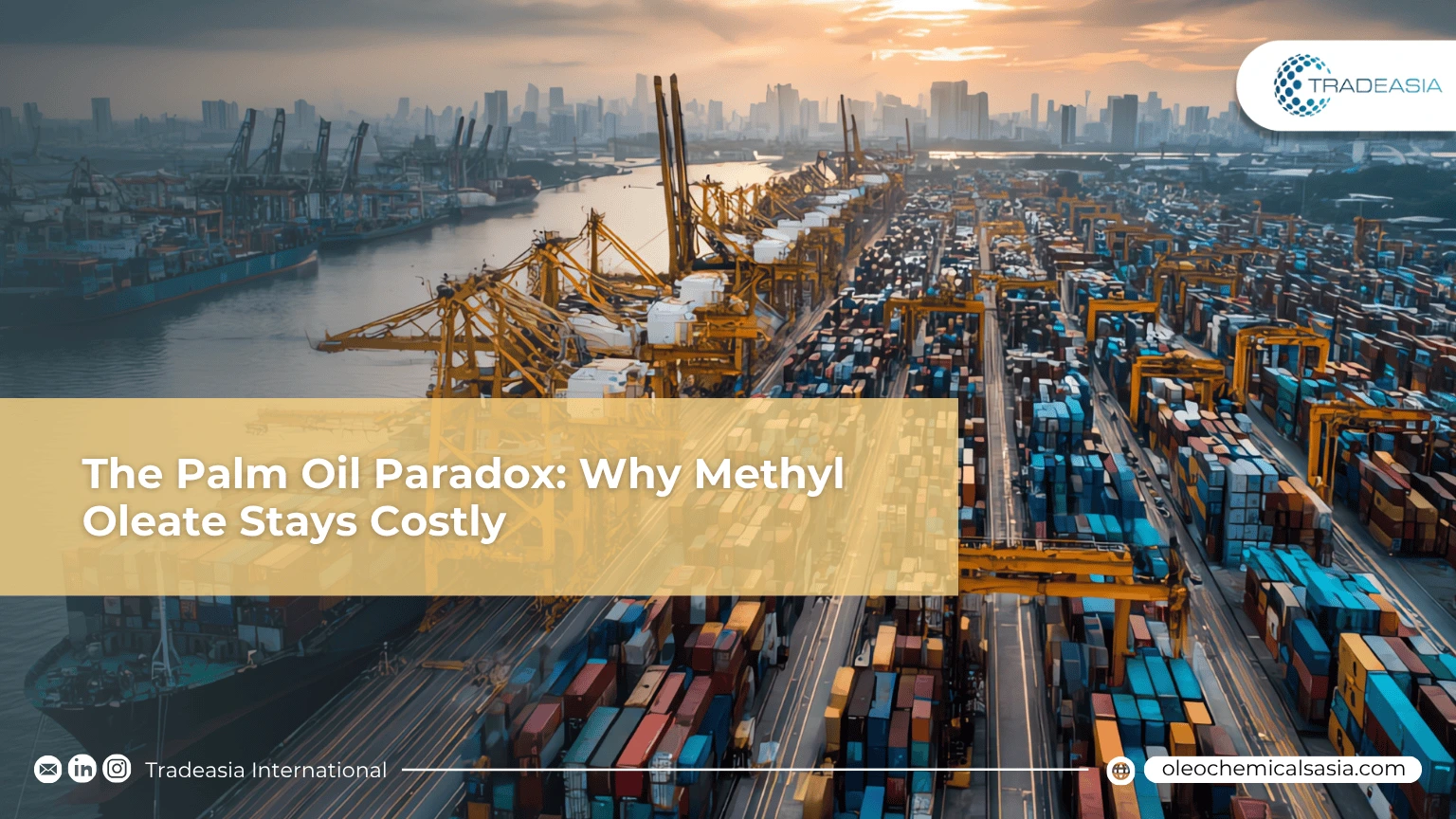Inventory vs. Mandate: The Palm Oil Paradox Suppressing Cheaper Methyl Oleate Inputs

Table of Content
- Elevated Stocks Meet Resilient Market Pricing
- The Biodiesel Factor: A Permanent Price Floor
The release of the latest Malaysian Palm Oil Board (MPOB) inventory data in mid-October 2025 presented a classic market paradox for Methyl Oleate buyers. On the surface, the figures appeared decisively bearish: Malaysian palm oil stocks ballooned to 2.36 million metric tons, marking a significant 7.2% increase from the previous month, reaching a level not seen in nearly two years. For companies expecting cheaper CPO feedstock to lower the cost of their Methyl Oleate, this stock overhang typically signals a pending price crash, yet the market has held firm.
For international buyers seeking reliable volumes, knowing that "every drum of palm oil is traceable to a commitment to quality and consistency" is vital. Companies like Tradeasia International specialize in managing the complexities of this supply chain, ensuring that even when inventories rise, the quality standards that underpin the Oleochemicals sector—and thus the purity of their Methyl Oleate—are never compromised.
Elevated Stocks Meet Resilient Market Pricing
The core puzzle lies in why this high inventory fails to depress the cost of Methyl Oleate’s raw material, Oleic Acid. MPOB data confirmed the stock surge, even though production saw only a minor seasonal dip of 0.73% to 1.84 million tons. Despite this clear supply cushion, the CPO December 2025 futures contract on October 10 maintained its ground, closing at a resilient RM 4,546.00/MT. The reason is powerful, structural demand. Exports rose strongly, up 7.69% to 1.43 million tons in September, driven by global restocking ahead of the festive season. This solid demand base provides immediate counter-pressure to the large stock figures, keeping the cost basis for Methyl Oleate elevated.
The Biodiesel Factor: A Permanent Price Floor
The second, and arguably more powerful, force offsetting the high stock level is the mandatory fuel policy in Indonesia. The commitment to implement the B40 biodiesel program in 2025, with further ambitions toward B50 in 2026, acts as a fundamental, non-negotiable demand sink for CPO. This regulatory pull effectively consumes millions of tons of CPO that would otherwise compete with the oleochemical sector for the same feedstock, fundamentally preventing the price of Oleic Acid (and thus Methyl Oleate) from dropping significantly. Buyers in the Oleate Esters Market, which is projected to grow to US$ 2.6 billion by 2034, recognize this long-term demand reality. Therefore, while the 2.36 million MT of stock offers a psychological comfort, the strategic demand for Methyl Oleate applications—from industrial lubricants to bio-based surfactants—ensures that the price of its raw material remains firmly supported.
Sources:
-
Trading Economics - Palm Oil - Price - Chart - Historical Data - News
-
GM Insights - Oleate Esters Market Size, Share, Trends & Forecasts - 2034
-
Palm Oil Inventory and Price Dynamics: A Deeper Look at Fuel vs. Food Demand - Palm-Chemicals.com

Leave a Comment